Versatile Guttler cultivator-cum-drill works for Suffolk farm
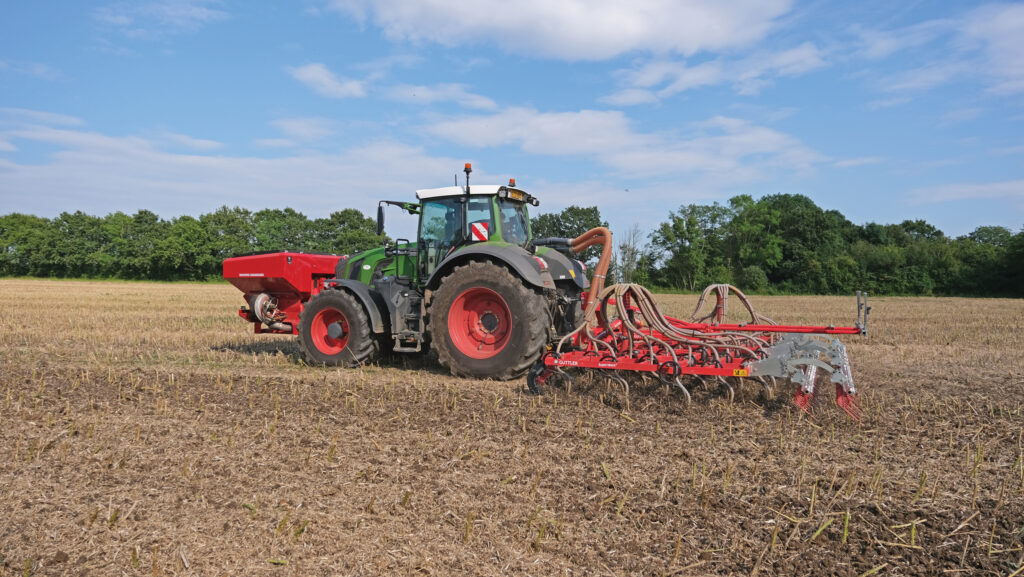 © James Andrews
© James Andrews Dismal weather and claggy soil conditions last autumn left Richard Ling hunting around for a drill that was light footed enough to get crops off to a respectable start.
The tool he settled on was a Guttler Supermaxx Bio, which isn’t a drill at all… it’s a spring tine cultivator.
However, by furnishing it with a set of bolt-on coulters and dual seed distribution heads – a dedicated kit is available from importer Wox Agri Services – it dutifully assumes the role.
See also: Tips for picking the best cultivator wearing metal
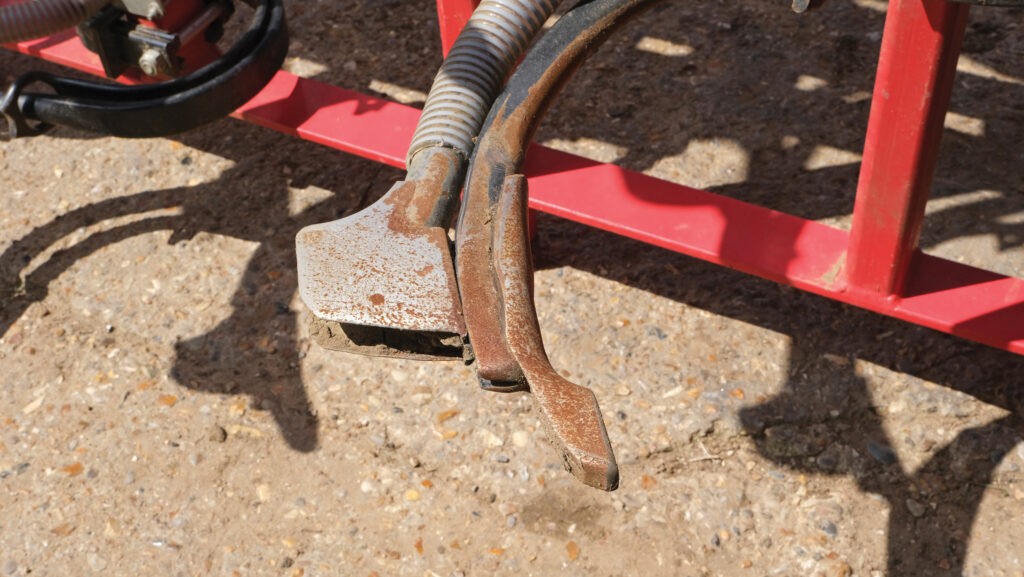
Bolt-on coulters © James Andrews
Having just tines and a twin-row following harrow engaging with the ground, the Supermaxx allows seeds to be placed in almost any conditions where the tractor can travel.
Plus, with the drilling paraphernalia designed to be easy to remove, Richard still has a light cultivator for loosening ground ahead of some of his main drills, all of which are 6m wide.
With soils across his 1,000ha arable area at Wortham, Suffolk, ranging from sand to heavy clay and preferences from contract farming customers differing, these are an eclectic mix.
A Horizon DSX and Dale Eco Drill toolbar offer no-till seeding into stubbles and cover crops; a Vaderstad Rapid works into cultivated ground, and a Weaving power harrow with disc coulter bar deals with ground ploughed after sugar beet.
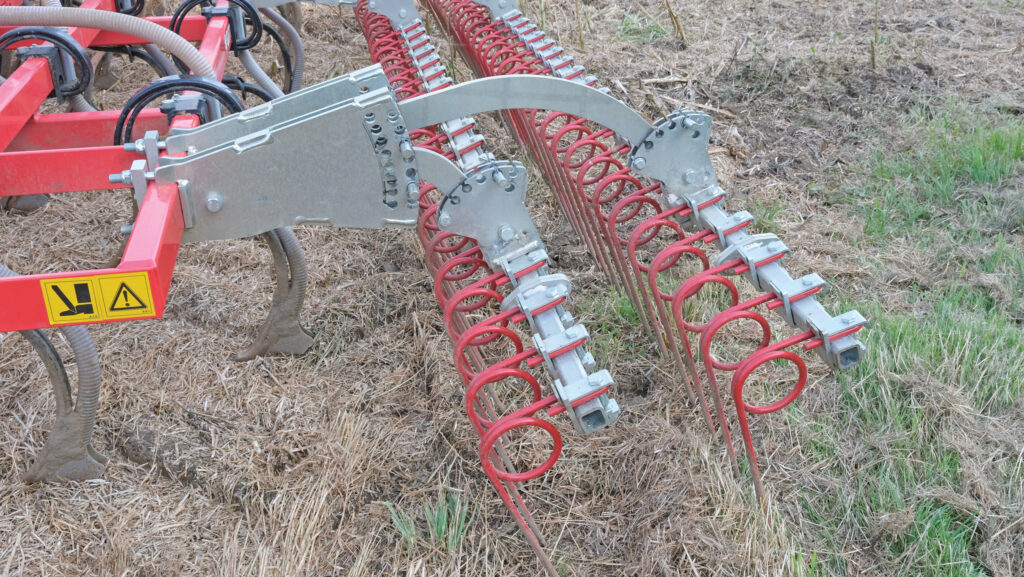
Twin row following harrow © James Andrews
All have their place, but none can get a crop established as quickly and cost effectively in challenging conditions as the Guttler.
Added to that, it has proved useful for putting in catch and cover crops with minimal fuss, as well as various Sustainable Farming Incentive (SFI) seed mixes.
Richard first spotted the Supermaxx working at the Normac demo day in September 2023, and with no sign of the rain abating long enough for his main drills to cover the ground, he requested a demo.
Trash flow
After using it to sow some wheat in November, he was impressed enough to keep it.
Unlike his Dale tine drill, which has press wheels that can compact wet soil, the narrow point of the Guttler simply draws a slot for the seed, creating just enough tilth for the following harrow to fill it back in again.
It is also unfazed by large amounts of chopped straw and other crop residues.
“It’s amazing how much trash can flow through without blocking, particularly when you compare it with the Dalbo Cultimax we were running before,” says Richard.
“This just wasn’t designed to cope with the volumes of residues we have here and we struggled to get it to work, even when we removed some of the tines.”
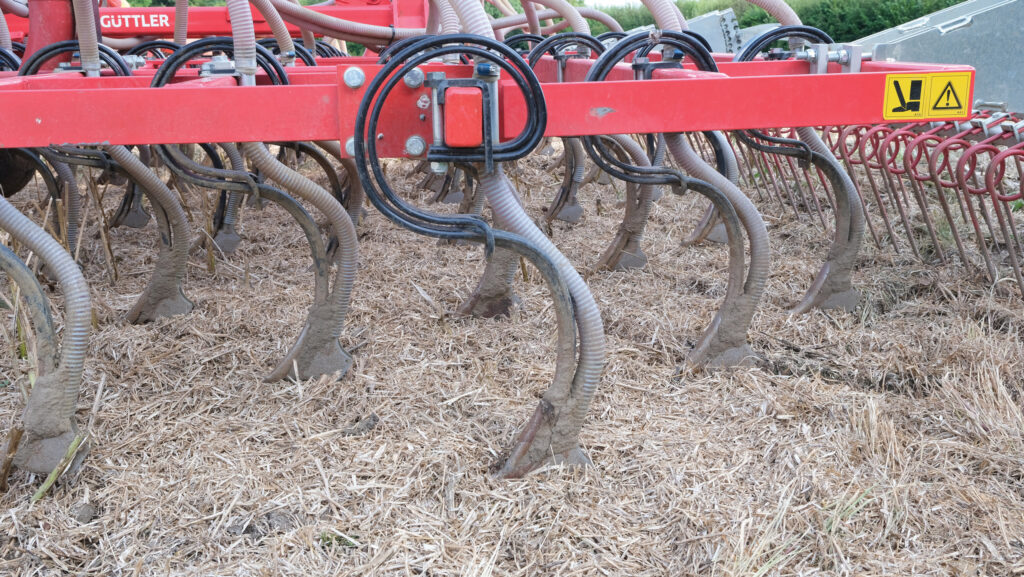
Spring tines © James Andrews
Although the Guttler packs a busy-sounding 27 tines into its 6m working width, it staggers these over seven rows.
The result is that it can offer a conventional drill spacing of just over 12.5cm, while still providing plenty of room for residues to work their way through.
In addition, the twin-row following harrow helps level the surface and cover the seed, without the risk of compacting the top with a packer roller.
Independent height and angle adjustment on both rows of tines allows straw distribution to be carefully managed.
“We tend to set the first one slightly higher to knock the top off any lumps and have the rear one scraping the ground more aggressively to do the final levelling and flick soil over the seed,” says Richard.
As for drill working depth, this is adjusted via a pin-and-hole arrangement on four front gauge wheels – two on each wing – which are positioned so that they run on fresh ground.
“The fact they don’t have to bump along in the tractor wheel marks helps the tyres stay clean and keeps seeding depth fairly consistent,” he adds.
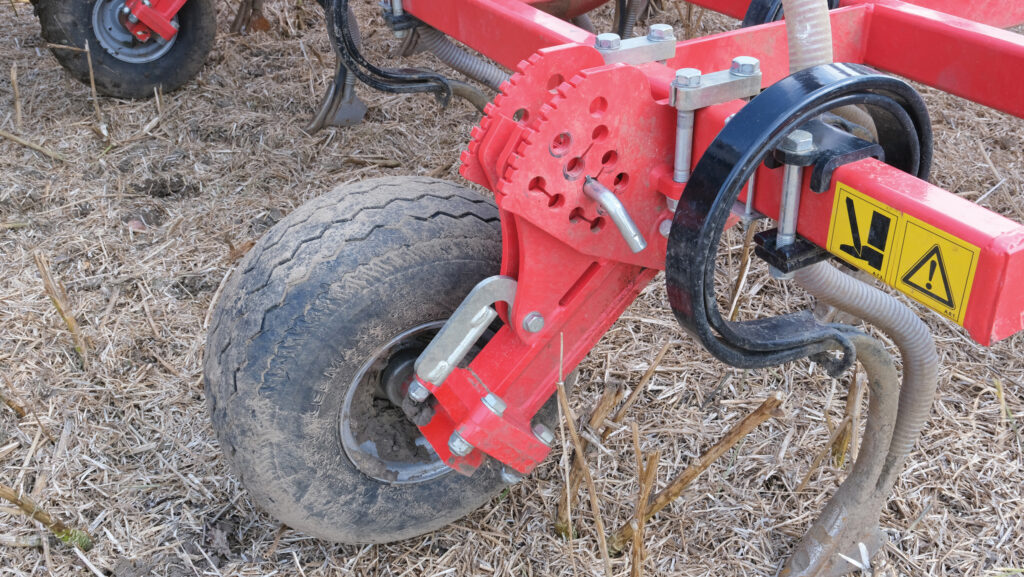
Depth wheels © James Andrews
Adjustment of the following harrow also has an effect on working depth and levelling, but Richard tends to take most of the pressure off this by keeping tension on the top link.
The ideal working speed seems to be about 10kph; any faster than this and things start to get a bit hectic with soil and crop residues flying around.
But slower speeds aren’t ideal either, as the tines create too little soil movement and the following harrow is more likely to clog up.
Cost-effective establishment
All in, the cultivator, coulters, distribution heads and pipework cost about £30,000 and there was already a suitable front hopper on the farm to provide it with seed.
This is a Weaving unit that was initially purchased for the Dale Eco Drill, but also gets used with the power harrow and disc coulter combination.
Packing twin metering units and a central divider, it’s capable of applying two products at once.
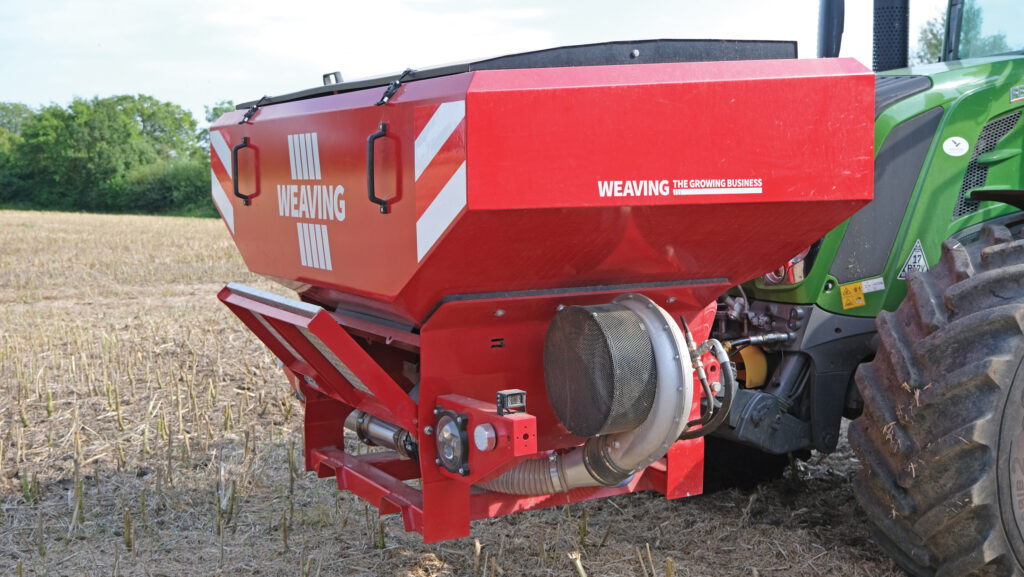
Weaving front hopper © James Andrews
However, the main reason for speccing it this way was to give enough throughput when applying higher seed rates at fast working speeds.
At any rate, the Supermaxx is currently piped so that one distribution head feeds the left wing and the other the right, so any dual seeding or separate seed and fertiliser placement would require some replumbing.
The hopper is isobus compatible, but Richard opted for an additional screen so that the tractor’s own one – this drill tends to get used with a Fendt 828 – can be reserved for guidance and viewing other settings.
Twin sideways-facing cameras on the front tank feed into another display, which improves safety when pulling out onto the road.
Covering the ground
So far, the Guttler has covered about 600ha, which includes sowing wheat in November and February, establishing various SFI mixes and, in cultivator mode, freshening up ground for barley in the spring.
Considering the conditions, it got all these crops off to a decent start. But only the combine yield meter will show how it truly compares with the farm’s main establishment tools.
The Guttler’s workload is set to increase dramatically over the coming months as it stitches in catch and cover crops behind the combine.
All ground destined for autumn cropping will get a phacelia, berseem clover, linseed, buckwheat, vetch and radish mix, with fields overwintering until the spring getting some oats thrown in.
If last autumn is anything to go by, it might also take some of the winter bean drilling area away from the Horizon DSX, before resuming its cultivating role in the spring.
Quick conversion
Operators have a couple of options when reverting the Supermaxx to cultivating duties, depending on how much ground needs to be covered and how much of a rush they’re in.
The simplest is to leave it as is and just turn off the flow of seed, but to avoid unnecessary coulter wear, undoing one bolt on each will see them quickly removed.
Pipework can then be tied up on the top of the machine or removed completely to remove risk of it getting damaged.
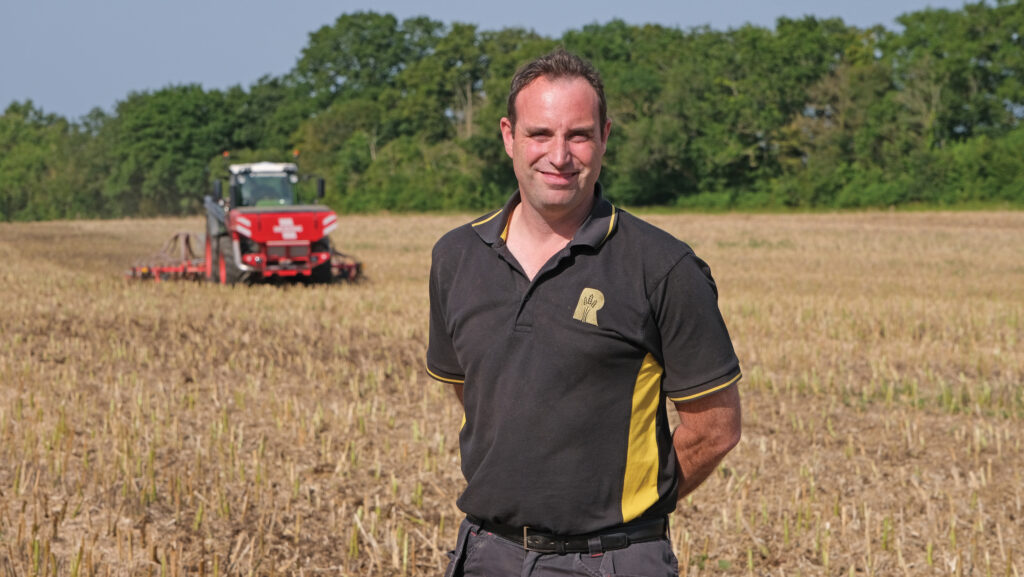
Richard Ling © James Andrews
“When we’ve only got a small area to cover, we tend to leave the coulters in place, but we do go to the trouble of removing them on larger jobs so that they last a bit longer,” says Richard.
This practice means the coulters are still in decent condition. And, thanks to the addition of tungsten tiles on the ends of the points, the spring tines are still on their first set of wearing metal. However, some of these are now on borrowed time.
Additional broadcaster
One extra Richard didn’t opt for on the Supermaxx is a separate applicator for applying small seeds or slug pellets via spreader plates.
Part of the reason is that this drill mainly gets used with pre-mixed seed blends, but he also has one of these units on his other main cultivator – a 4m Grange LDL subsoiler.
This gets used for rotational subsoiling on his own direct drilled land every four years, as well as lifting ground ahead of the Vaderstad Rapid.

